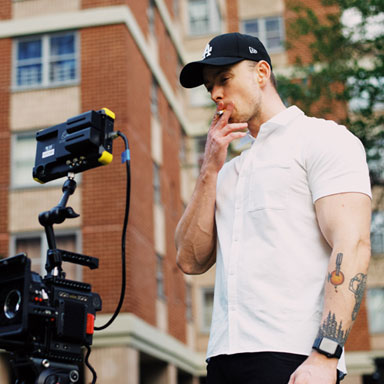Betty Boop: Snow White
This independent movie shows the audience a world wherein nothing is undaunted, nor do we envision it. In which a mirror sprouts arms with white-gloved hands and buffs a worthless Queen’s nose with a little towel that it pulls from its rear. In which long icicles that loom over an entryway suddenly twist themselves up and afterward down, similar to thick strips or locks of hair or built, outsider fronds, and afterward develop appearances to sing in chorale, her progression mother the Queen! In which a mouse jabs its head from the pocket of a couple of long johns spread as an honorary pathway for a well proportioned, dark clad, noisy voiced, colossal headed lady, and brings up its cap, hi ya kid! An independent movie which suits of reinforcement sob and dance go to pieces and tumble to the ground; big-hearted trees free a lady bound to them with rope; and seven dwarves ski down a slope with their whiskers gushing behind them like breeze socks. In which a comedian named Koko, motivated by vaudeville and the outfits of German jokesters and Bessie McCoy doing “The Yama Man,” moves and sings and stretches and changes like he is made of elastic, or liquid, of some unholy substance, that makes him to partake in his own activity, like his realistic consistency is of a different universe altogether, which it is. Everything has life, is associated with life, swells, responds, brimming with plausibility.
In 1926 Virginia Woolf composed of early independent movie capability to make apparent “some mysterious language which we feel and see, yet never talk,” inquiring: “Is there any trademark which thought has that can be delivered noticeable without the assistance of words?” Prompted by a screening of The Cabinet of Dr. Caligari (1920), in which an abnormal shadow; a mishap of projection-expands at the side of the screen, lumps, quivering and fledgling, Woolf considers that feelings, for example, dread or outrage could yield different structures, similar to “a dark line wriggling upon a white sheet.” Richard Fleischer-child of Max, who with his sibling Dave concocted the rotoscope, the rotograph, and made Fleischer studios of Betty Boop and Popeye distinction reviews that he also was mesmerized by Caligari, the primary independent movie his dad carried him to, at age seven: “Maybe with this independent movie, he was starting me into the world in which he lived. His energized kid’s shows generally depended intensely on oddity for their impact.”
Remarkable enthusiasts of Betty Boop; Theodor Adorno, who regretted the ascendance of Disney’s Donald Duck over Betty’s hazier, more appalling and rebellious structure; Jean-Paul Sartre, who is reputed to have scoured the independent movie of Paris for an impression; and Simone de Beauvoir, who portrayed her as “that heavenly person . . . whose charms struck the New York blue pencils as so upsetting that they sentenced her to no end.” Betty Boop: Snow White (1933) was made a year prior to Betty’s demise because of the Hays Code, which, for “moral” purposes, replaced her cleavage, twists, supporter, criminal canine beau Bimbo, comedian buddy Koko, and working young lady freedom with a house, high neck area, cover, pup, homegrown errands, and the always dull Grampy. In the short and bewildering independent movie, she has the most over the top wild and dreamlike memorial service a young lady frozen in life and demise in a final resting place made of ice-in suspended activity!
Having gotten away from the grip of her envious stepmother, Betty in any case (and according to the hapless subject of every one of her kid’s shows) coincidentally finds inconvenience and ends up carried through the hidden world by her seven whiskery companions, with the malicious Queen-now a haggy, snare nosed witch-in pursuit, ripping at the air with her witchy hands on schedule to the beat of a piano and a bass. Betty has everything except vanished, her ice final resting place is offstage correct, and the picture is presently involved by Koko, first in quite a while standard structure and afterward different by the Witch-Queen who disregards her mirror the length of his body, as though stringing a needle-as a pale, shaggy, undulating, dull looked at fiend of himself. Koko additionally is and isn’t Cab Calloway, whose voice transmits from the jokester’s twisted body, singing the sorrowful “St. James Infirmary Blues” as he cakewalks and shimmies and slides through the secret cavern, its worn out ground moving gradually like a transport line underneath him in this independent movie.
Music is in a real sense what gives this activity its movement characters run, sway, waltz, whirl, skip, grow, shrivel, change, hoot, holler on schedule with the soundtrack, impeccably synchronized by a gadget called the “prompt meter” in this independent movie. It additionally flags the advances between various circles of being: the point at which you hear that wa-wa of the trumpet with its stem-in Harmonica quiet, or the minor-keyed chorale of horns, you realize a dim development is going to happen. In Betty Boop: Snow White, these sounds introduce Koko’s hypnotizing melody, which recounts his child loosened up on a long white table/She so sweet, so cool, so fair, and envisions his own burial service, the subtleties of which thusly follow up on his vivified body. Cover me in my straight-leg britches, for example, sees a couple of spooky pants run down Koko’s flexile legs, sliding the entire way to the ground, just to be pulled back up by an additional a sets of hands sprung from underneath his worn out shirt. Whenever the jeans arrive at his shoulders, a couple of eyeballs fly into Koko’s beforehand empty attachments, rolling merrily.
The vivified universes of the Fleischer siblings suggest that a shape-evolving, fantastical, maybe even idealistic alteration could drift wherever underneath the outer layer of our material domain and its advances. All that is strong melts (at times into air!), gravity is levity, disfiguration is opportunity, turbulent visual gags transport, and perpetual impetus is the thing to address. Walter Benjamin, no outsider to modified states, and Sergei Eisenstein both expounded on the guarantee presented by early kid’s shows. For Eisenstein, it lay in the “plasmaticness” of the figures that act “like the base cellular material, not yet having a ‘steady’ structure, yet fit for accepting any structure.” For Benjamin, it was the connection between individual experience and aggregate structure. “Independent movie has sent off an assault against the old Heraclitean truth, that in waking we share a world while dozing we are each in isolated universes,” he composed, and manifestations like Mickey Mouse, or Betty Boop, are independent movie transmissions of “the aggregate dream.”
Likewise with all dreams, this present reality development of this aggregate dream was not without its savageries, like the Taylorized activity labor force, with the most reduced paid frequently ladies who carefully cut and shaded individual movement cells. Or then again the encroachment claim brought against Max Fleischer and Paramount by Helen Kane, an entertainer whose act roused Betty, and who thusly may have ripped piece of it off-that renowned Boop-Oop-a-Doop-from a Black entertainer by the name of Little Baby Esther. (Kane lost, and the two ladies remained unaccredited and disappointed, passing on in relative indefinite quality, while Betty’s acclaim lives on.) But right now of weakness, similar to the exhausted populace Benjamin discusses in “Experience and Poverty”- composed the year Betty Boop: Snow White was made-“to whom the motivation behind presence appears to have been decreased to the most far off disappearing point of a perpetual skyline,” I like to consider how we could all live and rest and dream together, at long last not quite as separated or uninterested as we envision this independent movie.




